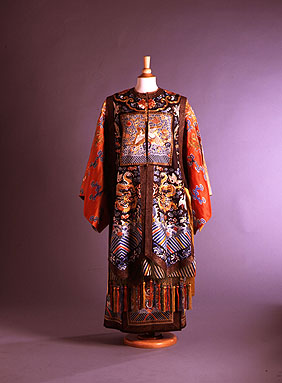|
One of the most important duties of a Han leader or
governor was to regulate the financial and economic situation in his or
her provinces. For example, governors were in charge of multiple counties.
This governor had to send annual reports to the emperor, notifying the government
of the financial status of the various counties. The importance of this
process was to insure that all of the counties had a stable situation, both
with finance and trade.
Although steps were taken to balance the money situation,
taxes and debt often hurt many members of the Han Dynasty. Farmers were
hurt the most, having to pay both the regular poll tax, and a heavy land
tax. Even though the wealthy citizens also owned much land, they were able
to evade the taxes, often paying off officials and tax collectors.
Weights and coins simplified finance in Han China.
Before metallic coinage appeared in China, cowrie shells were the primary
currency. Individual shells were called Bei and a string of shells
was called peng. When metal coins were first introduced, many
coins were named after their weight. The idea of cash, or coins in general,
was Qian. Specific coins were the Ban Liang and the Wu Zhu.
The entire money system was standardized, and the weights and worths of
coins composed a uniform system, making daily life much easier.
During the Han Dynasty, trade reached an all time
high, and the prosperity of merchants flourished. Merchants dealt heavily
in grain, iron, and salt. Iron was used both in production of weapons and
tools, but also in the production of household items. The problem for the
merchants was, even though their business was very successful, they were
looked down upon by their superiors. Both Legalists and Confucianists thought
of merchants as pests and annoyances to their culture, and because of this
put them at the bottom of the social order.
Lastly, because of the success of trade
in Han China, craft flourished. Various world superpowers trade large amounts
of money for Han silk and pottery, and even Caesar desired Han fabrics.
Because of the order of the governors and
the success of trade and economics, the financial system in Han China was
very stable, and led to a very powerful and profitable way of life.
|

A Guan or Suo (Ring of Coins)

Example of Han Silk, Often Traded with other
countries over the Silk Road
|


